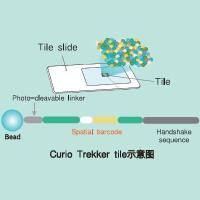Chromosomal Mapping of Genes by Nonisotopic In Situ Hybridization
互联网
互联网
相关产品推荐

Recombinant-Arabidopsis-thaliana-Protein-CPR-5CPR5Protein CPR-5 Alternative name(s): Protein constitutive expression of pathogenesis-related genes 5; Protein constitutive expression of PR genes 5 Protein hypersenescence-1
¥13790

Trekker Single-Cell Spatial Mapping Kit 单细胞空间转录组分析试剂盒
询价

N-Butyldeoxynojirimycin,72599-27-0,film (dried <i>in situ</i>),阿拉丁
¥4326.90

Recombinant-Human-Transmembrane-protein-173TMEM173Transmembrane protein 173 Alternative name(s): Endoplasmic reticulum interferon stimulator; ERIS Mediator of IRF3 activation; hMITA Stimulator of interferon genes protein Short name
¥12152

Recombinant-Pig-Transmembrane-protein-173TMEM173Transmembrane protein 173 Alternative name(s): Stimulator of interferon genes protein; poSTING
¥12138
相关问答

